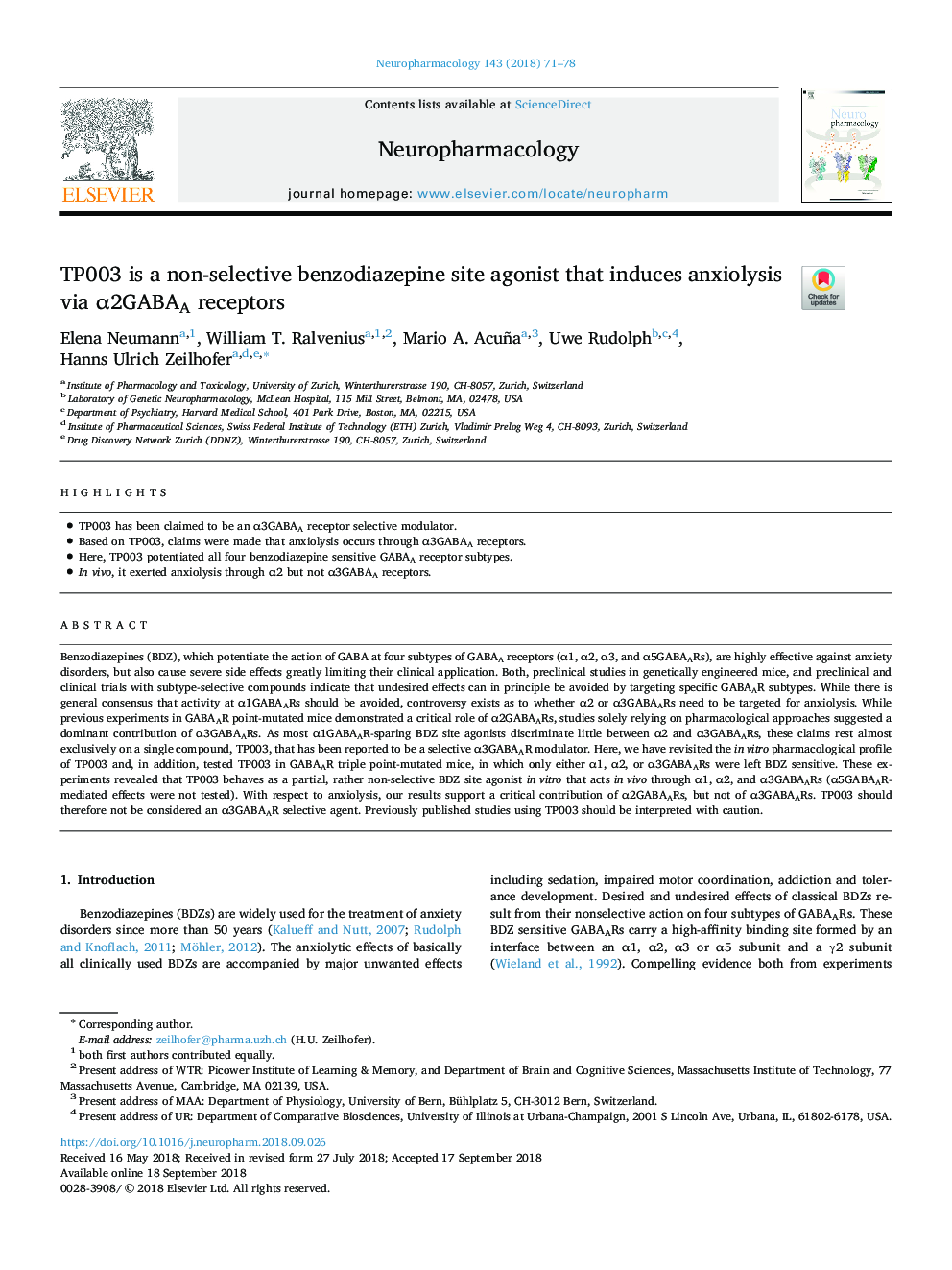| Article ID | Journal | Published Year | Pages | File Type |
|---|---|---|---|---|
| 11025755 | Neuropharmacology | 2018 | 8 Pages |
Abstract
Benzodiazepines (BDZ), which potentiate the action of GABA at four subtypes of GABAA receptors (α1, α2, α3, and α5GABAARs), are highly effective against anxiety disorders, but also cause severe side effects greatly limiting their clinical application. Both, preclinical studies in genetically engineered mice, and preclinical and clinical trials with subtype-selective compounds indicate that undesired effects can in principle be avoided by targeting specific GABAAR subtypes. While there is general consensus that activity at α1GABAARs should be avoided, controversy exists as to whether α2 or α3GABAARs need to be targeted for anxiolysis. While previous experiments in GABAAR point-mutated mice demonstrated a critical role of α2GABAARs, studies solely relying on pharmacological approaches suggested a dominant contribution of α3GABAARs. As most α1GABAAR-sparing BDZ site agonists discriminate little between α2 and α3GABAARs, these claims rest almost exclusively on a single compound, TP003, that has been reported to be a selective α3GABAAR modulator. Here, we have revisited the in vitro pharmacological profile of TP003 and, in addition, tested TP003 in GABAAR triple point-mutated mice, in which only either α1, α2, or α3GABAARs were left BDZ sensitive. These experiments revealed that TP003 behaves as a partial, rather non-selective BDZ site agonist in vitro that acts in vivo through α1, α2, and α3GABAARs (α5GABAAR-mediated effects were not tested). With respect to anxiolysis, our results support a critical contribution of α2GABAARs, but not of α3GABAARs. TP003 should therefore not be considered an α3GABAAR selective agent. Previously published studies using TP003 should be interpreted with caution.
Related Topics
Life Sciences
Neuroscience
Behavioral Neuroscience
Authors
Elena Neumann, William T. Ralvenius, Mario A. Acuña, Uwe Rudolph, Hanns Ulrich Zeilhofer,
